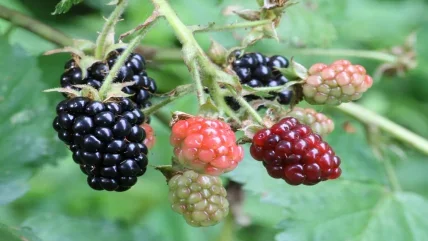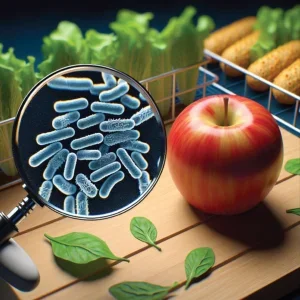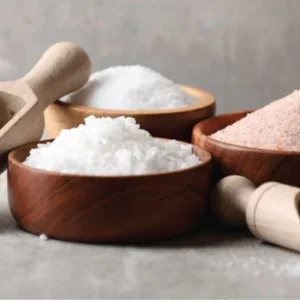
Health and wellness drive global product development in the superfruits and berries industry. A wide spectrum of issues, from obesity to malnutrition, lead the demand for healthier products, with fruits and berries providing essential vitamins and nutrients. Superfruits are at the forefront of this health and wellness industry; products from fruits such as pomegranate, blueberry, acai and baobab, command a premium price for their reputed beneficial effects. More than 25,000 products based on superfruits are available on the market today.
There are several tropical fruits that hold potential interest for the soft-drinks industry. Most of these are not available commercially, due to demand and supply issues. Soft-drink manufacturers are unlikely to introduce new products unless they are certain that supplies of the raw material and derived ingredients are going to be available. At the same time, procurement functions cannot guarantee contracts until launching the product and ascertaining demand. In addition, the ingredient producer has little incentive to make the necessary investment to guarantee such supplies until assured that there will be a revenue guarantee.
There is no question that tropical juices are here to stay. From the marketing point of view, they have enabled soft-drink manufacturers to open up new areas of the market and expand their business. Because tropical juices are increasingly used in mixtures with other fruit juices, they encourage growth and diversification in the consumption of all fruit juices. As the soft-drink market increases and the trend moves away from artificial flavours towards flavouring by higher juice content, so interest in tropical fruit juices will continue to grow.
Supply and demand
Supply need not be a major problem. All tropical fruits can be produced in countries where land is available and where economies are desperate for sources of foreign income. Finance and technical assistance are available. Indeed, one of today’s problems is the enthusiasm with which many of these countries have grasped these new opportunities. This could easily lead to supply outstripping demand to an unacceptable level, creating problems for some of the producers, until the market grows enough to absorb this additional production. There is every reason to believe that this will happen in the years to come, and that tropical fruit juices will gain an increasing share of the fruit juice and fruit beverage market.
Growing consumer awareness regarding the health benefits associated with the high antioxidant content of superfruits has helped to drive activity, bringing many little known fruits into the mainstream market. Activity has been reflected in their growing use as ingredients and flavourings in a wide range of food and drinks products. A rise in the largest number of new product launches marketed on a superfruits platform is being witnessed in the soft-drinks category, primarily in the fruit drinks and wellness drinks arenas. In terms of types of fruit, pomegranate appears to have emerged as the leader; other fruits are also continuing to grow in popularity, including acai and other berries. New fruits are emerging on the superfruit bandwagon; all focusing on high levels of antioxidants, often by comparison with levels in more established superfruits, and often moving into food and drinks, following a period of launches in supplement form.
In the US, pomegranate recorded the highest levels of product activity, ahead of blueberry, although interest in acerola also appeared to be increasing. UK launches were focused strongly on pomegranate and berries, particularly cranberries, blueberries and acai. With so many different types of tropical and exotic fruits, it is difficult to predict where the new success stories will come from. But what is almost inescapable is that there will continue to be new varieties put forward as the market develops, and these will have to compete with more established and familiar varieties. The ability to supply the quantities needed and market their multiple benefits successfully will be key to their future, as well as the willingness of mainstream food and drinks companies to take them up as ingredients in their products.
On the market
While the regulations have hindered fancy marketing terms in product labels, it has created an environment for science-grounded products. This addresses the scientific substantiation of health claims in relation to vitamin C, and the reduction of tiredness and fatigue; contribution to normal psychological functions; the regeneration of the reduced form of vitamin E; contribution to normal energy-yielding metabolism; maintenance of the normal function of the immune system; and protection of DNA, proteins and lipids from oxidative damage. Superfruit products have been successful in creating science-based awareness.
The increasing trend of products that focus on ‘successful aging’ promises an active, productive and rewarding life for as long as possible. Targeted at more mature women, these products include beauty drinks filled with nutrients and phytochemicals. As the European Food Safety Authority (EFSA) prohibits misleading branding that has no proven scientific basis, products have repositioned their health claims. From using the "probiotics" term, products have switched to "high in vitamin C". These regulations have also reduced products that claim to have antioxidant properties and increased the number of products that have no additives.
Fruits and berries are becoming even more popular as ingredients for health and wellness consumer products, as the ‘five a day’ is difficult to meet in the daily life of modern people seeking health and convenience as one solution. The past decades of research also reveal that in addition to being abundant sources of vitamins, minerals, fibres and microelements, fruits and berries contains other substances, supporting a healthy lifestyle. A general agreement among health experts is that increased dietary intake of antioxidant compounds such as phenolics from fruits and vegetables can protect against the oxidative damage from free radicals.
Research and development
The research focus has been centred on the colourful pigments from a variety of fruits and berries, as carotenes and anthocyanins, as well as the more specific flavonoids and polyphenols, can be identified as having individual and particular roles in regulating biological processes, supporting health. Best known today are the beneficial effects of the polyphenol from grape resveratrol and flavonols from citrus fruits, sometimes designated vitamin P, both ingredients are available in abundance in fresh fruit, but as refined ingredients, may contribute to health in more potent doses, in either supplements or functional beverages.
The beverage industry has a particular interest in pursuing these opportunities, as various fruit-based extracts and juices add flavour diversity, thereby product assortment options. The pull from the consumer segment on healthiness from fruits and berries, as well as flavour diversity, demonstrates opportunities in ingredients, as well as considerations in the cultivation side, as some fruits and berries that are climate dependent, may be cultured, whereas others are still collected from the wild, which creates ingredient market dynamics when certain fruit and berry ingredients become a hype and start building a trend within consumer product development and consumption.
From the supply side, there are opportunities for refining, from general ingredients to more refined naturally derived functional ingredients. This may add to profitability in the fruits and berries ingredient industry, as by-products and fruit waste use opens new opportunities of market differentiation and new ingredient business segments. One factor that affects quality is fruit maturity, which affects the flavours and sweetness. Unripe fruit will give low yield and less sweetness, whereas too-ripe fruit may have undesirable flavours and a potentially lower yield, and some sugars turn into starches and the water content is reduced. The risk of contaminants also increases if fruit is aged, as certain fungi toxins such as aflatoxins and pathogen microorganisms can build over time.
Other quality parameters include the use of unauthorised fertilisers, pesticides and fungicides, which affect fruit ingredient qualities, as environmental circumstances at the cultivation site may transfer heavy metals to fruits, thereby creating a higher risk of catalysing oxidation and hazardous impacts on health. Heat treatments may affect the sugar content, by building sugar amines (Maillard reaction), which renders a brownish colour to the ingredient.
Process and manufacturing
In terms of processing, parameters for juices that affect quality are the various ways of heat treatment, where pasteurisation (90-95°C) and immediate hot-filling is the most widespread method. In recent years, sterile filtering, where filters with a low mesh grid can physically remove microbes, has had an impact on processing, as taste preservation is better than pasteurisation. Processing alternatives are abundant today, including high-pressure, ultrasonic, irradiation and other options that are more or less commercially feasible.
Typical preservation of the fruit preparations are achieved via technical ingredients such as sulphur dioxide (anti-microbial and enzyme retarding), benzoates, di-methyl-pyro-carbonate and sorbates (anti-microbials), as well as CO2, which adds acidity and delivers anaerobic conditions that are unfavourable for microbials. Concentration methods also affect the quality of fruit ingredients, where the most commonly used methods are vacuum evaporation or freeze concentration; the latter method is the best for flavour preservation. Filling is typically in drums or bulk containers.
Fruit powders containing lower than 6% moisture content are typically manufactured by cool spray or freeze drying, as well as fluid bed-drying methods. Nitrogen may be used to reduce the risk of oxidation during the evaporation process, and maltodextrins or other technical ingredients are used to reduce the stickiness of the fruit powders. Powders are typically bagged or filled into drums.
Depending on the fruit type and actual chemical compositions, these fruits are more or less useful for different industrial ingredient manufacturing purposes. Some fruits may become inedible in highly concentrated doses, due to their high polyphenol contents, rendering bitter tastes, and enzyme or fibre content may affect the digestive experience in high concentrations; for example, plums, papayas and pineapples.
These diverse formats of fruit-based ingredients also relate to other factors, which have become a parameter in the ingredient industry and consumer product manufacturing, including sustainability. Today’s industrial manufacturing is about tracing from farm to consumer, using as little water and chemistry for growing the crops, as well as leaving as few nutrients or ingredient options unexploited from the raw material, thereby increasing the focus on by-material and the extraction of premium ingredients. Finally, recycling waste as biomass for fuel or fertilisation is becoming an important trend in striving for sustainability.
The Canadean Intelligence report ‘Fruits and Berries – Nutrition and Health Market Trends and Insights’ is available via the Industry Report Store at www.industryreportstore.com.






